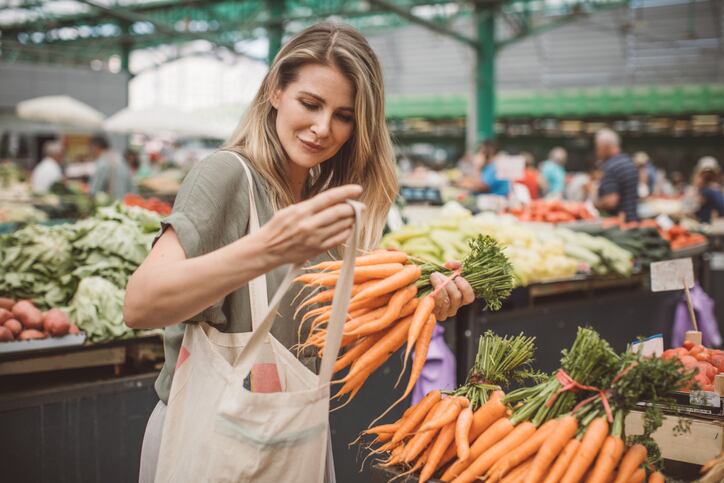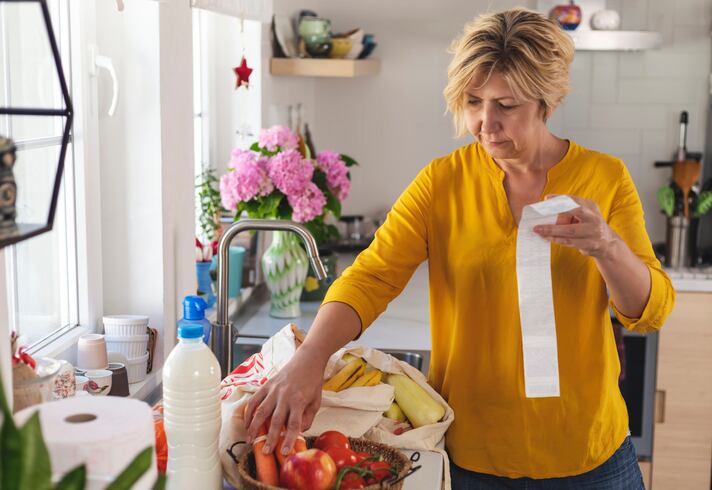IRI’s ‘FMCG Demand Signals’ research reveals significant changes in the way consumers are coping with a cost of living crisis unlike any they have experienced before. With inflation pressures intensifying throughout 2022 on volatile energy prices and supply-side shortages pushing up input costs even further, consumers’ disposable income, confidence and spending has now reached crisis levels across key European markets.
Shoppers surveyed tell of the return of the packed lunch, ‘staying in’, buying reduced products even out of date, and for some in crisis, dipping into personal savings to survive.
The IRI report investigated the impact of the pandemic, inflation and the cost of living crisis on over 230 FMCG categories, 2000+ product segments and over a 100 million SKUs across France, Italy, Germany, Spain, UK and Netherlands, as well as in the US and Asia. It flagged that deteriorating disposable income is plaguing middle- and low-income consumers across the developed world.
Over half of consumers are in crisis, said IRI, with 61% of consumers surveyed in Europe’s largest markets saying they are worried about the impact on them personally. Over 70% have already made changes to how they buy and use everyday items. Remarkably, 58% have now cut down on essentials (including missing meals) with 35% dipping into their personal savings and taking out loans to pay bills. Any money saved up over the pandemic has been drawn down to meet everyday living costs.
Growth in FMCG category sales has softened to 1.5% in 2022, adding €9bn in value sales vs. a year ago – down from 3% in the previous year. The latest figures covering the year-to-date are promising at 2.6% but driven largely by inflationary price increases rather than growing demand. Furthermore, the contribution in growth from post-pandemic pent-up demand has faded. Categories fuelling 2022 growth have been identified as Chilled & Fresh, Ambient, Beverages & Personal Care products, however this has been partially offset by declines in alcohol sales (5% drop) and household care (0.2% drop) products.
How shoppers are responding
Shoppers are taking control of their expenses to moderate the impact of high levels of inflation across a wide range of everyday purchases, especially food and other staples. They are choosing where to shop to moderate the effects of the crisis – be that via another channel, another retailer if their regular brand isn’t available (26%) on promotion (34%), or if the shop doesn’t have a wide enough range of deals (41%). They are switching to discounters who have expanded their stores into town centres and residential areas with a small but well-priced range of products at lower prices than the big retailers.
Some 40% of shoppers surveyed said they are looking more frequently for reduced items even if they are slightly out of date. Shoppers are creating new occasions, moments, and contexts for consumption of familiar everyday products – 29% are changing where they consume everyday products (at-home, on-the-go, outside venues), taking a packed lunch, staying in for drinks with friends rather than going to a bar, showering at the gym or at work, enjoying specialty coffees at home and replacing visits to the salon with hair styling and grooming products that can be used inexpensively at home.
Where shoppers eat is changing
Just over half of shoppers plan to order less cooked food to be delivered at home (51%) and 47% plan to eat out less – at a restaurant, bar or café. The pandemic trend to cook at home from scratch continues with 49% of consumers surveyed saying they plan to cook fresh. A new trend, harking back to previous generations and not culturally present in many European countries like the UK is the return to cooking at home for out of home occasions – including the return of the packed lunch – 34% of consumers say they intend to do so. A relatively smaller proportion of consumers (12%), mainly urban, professional and in the middle-to-high income consumer groups, plan to get more fresh meal boxes and kits to cook at home despite the higher price.
Some good news… shoppers still make room for new products
Choosing a new brand is influenced by price (62%), being readily available (49%) and high levels of on-shelf promotion (37%). Less important is being of better quality (15%), innovative (8%) and about making shopping easier (8%) because consumers expect any new product on-shelf will meet a retailer’s stringent standards. Meeting emerging consumer needs, for example, a wider variety of condiments and ambient fillings inspired by global tastes for packed lunches, pre-mixed spirits and quick commerce delivery for those staying in, and innovative packaging, convenient sizes and recyclable packaging, make familiar products more versatile in new settings.
Healthier and plant-based options are consideration drivers (24% and 22% respectively). However, these products are not always the first-choice purchase.
Shopping around for must-have products and the consumption of less expensive seasonal goods will increase
“The ongoing slump in unit sales in response to inflation is an early indication of softness in FMCG demand," said Ananda Roy, Global SVP, Strategic Growth Insights, IRI. “Unable to deliver every day lower pricing deals – and even maintain prices – because they’re experiencing higher input costs themselves, means brands and retailers need to look again at how they can support consumers throughout this very difficult period. We’re witnessing the biggest movement in consumer behaviour in over five decades, with shoppers questioning ‘Do I really need it?’, ‘Can we still afford to make a sustainable or altruistic choice?’ and now ‘Use less, waste less’.”
With the direction of travel likely to worsen, consumers are expected to get better informed to cope better with a significantly constrained standard of living. That puts the onus on the food industry to adapt, said Roy. “Brand manufacturers and retailers who have fuelled the consumers’ expectations to receive the highest quality and innovation, all year round and out of season, at the lowest possible price be it food, cosmetics, apparel or household products; are now unable to deliver,” he said. “The tide has truly turned and a whole generation of consumers are experiencing a declining standard of living not just a cost-of-living.
“Gone are the days of the one-stop weekly shop, we’re expecting to see an increase in shopping around for must-have products and the consumption of less expensive seasonal goods. There are several difficult decisions for shoppers on the cards, and retailers and brands will do well to take a long and hard look at how they’re going to respond to shopper needs.”




